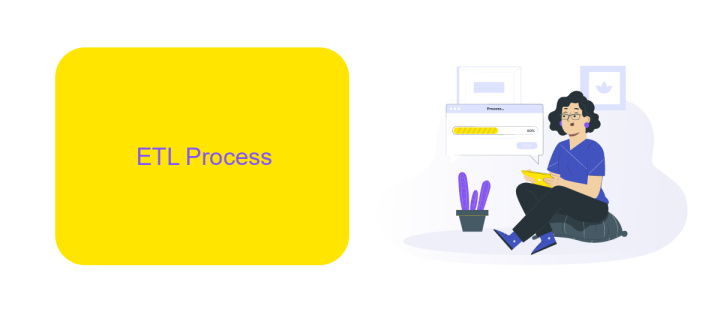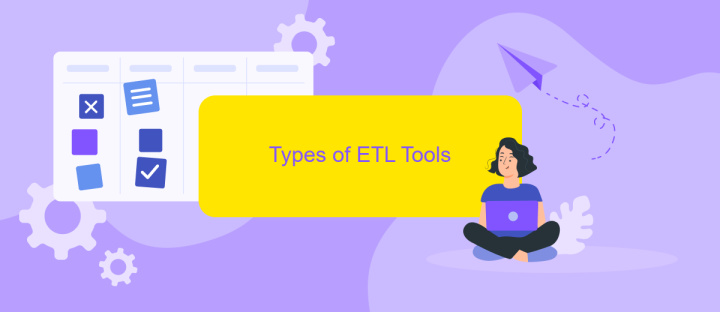Data ETL Pipelines
In today's data-driven world, efficient data management is crucial for businesses to thrive. Data ETL (Extract, Transform, Load) pipelines are essential tools that enable organizations to seamlessly integrate, process, and analyze vast amounts of data from various sources. This article explores the fundamental components, benefits, and best practices of implementing robust ETL pipelines to enhance data-driven decision-making.
Introduction
Data ETL (Extract, Transform, Load) pipelines are essential components in modern data management and analytics. They facilitate the seamless flow of data from various sources, transforming it into a usable format and loading it into data warehouses or other storage systems. This process ensures that organizations can make data-driven decisions efficiently and effectively.
- Extraction: Gathering data from multiple sources such as databases, APIs, and flat files.
- Transformation: Cleaning, filtering, and modifying the data to meet specific requirements.
- Loading: Transferring the transformed data into a target system for analysis or reporting.
Setting up robust ETL pipelines can be complex, but services like ApiX-Drive can simplify the process. ApiX-Drive offers easy-to-use integrations that connect various data sources and automate data workflows without requiring extensive coding knowledge. This makes it an invaluable tool for businesses looking to streamline their data operations and improve overall efficiency.
ETL Process

The ETL process, which stands for Extract, Transform, Load, is a crucial component of data management and analytics. During the extraction phase, data is collected from various sources, such as databases, APIs, and flat files. This raw data is then transformed through cleaning, normalization, and enrichment processes to ensure it is in a suitable format for analysis. Finally, the transformed data is loaded into a target data warehouse or database where it can be accessed for reporting and analysis.
Effective ETL processes often require integration with multiple data sources, and tools like ApiX-Drive can simplify this task. ApiX-Drive allows users to automate the extraction and loading of data between different platforms without the need for extensive coding. By streamlining these integrations, ApiX-Drive helps to reduce the complexity and time required to set up and maintain ETL pipelines, enabling organizations to focus on deriving insights from their data more efficiently.
Types of ETL Tools

ETL (Extract, Transform, Load) tools are essential for managing data workflows, ensuring data quality, and integrating data from various sources. These tools come in different types, each catering to specific needs and use cases.
- Batch Processing ETL Tools: These tools handle large volumes of data in scheduled batches, making them ideal for data warehousing and reporting tasks.
- Real-time ETL Tools: Designed for continuous data processing, these tools are perfect for applications requiring up-to-the-minute data, such as live analytics and monitoring.
- Cloud-based ETL Tools: These tools leverage cloud infrastructure for scalability and flexibility, supporting integration with various cloud services and platforms.
- Open-source ETL Tools: Cost-effective and customizable, these tools are suitable for organizations with specific requirements and the technical expertise to manage them.
- API-driven ETL Tools: Tools like ApiX-Drive facilitate seamless integration by connecting various applications and services through APIs, simplifying the data transformation process.
Choosing the right ETL tool depends on factors such as data volume, processing frequency, budget, and technical capabilities. Each type of ETL tool offers unique advantages, making it crucial to assess your specific needs before making a decision.
Building an ETL Pipeline

Building an ETL pipeline involves several crucial steps to ensure data is efficiently extracted, transformed, and loaded into the desired destination. The process starts with identifying the data sources and understanding the data structure and quality.
Next, the data extraction phase involves pulling data from various sources such as databases, APIs, and flat files. This step requires robust tools and technologies to handle different data formats and ensure data integrity.
- Data extraction from multiple sources
- Data transformation to clean and standardize
- Loading data into target systems
- Monitoring and maintenance of the pipeline
Once data is extracted, it undergoes transformation processes like cleaning, normalization, and enrichment to ensure it meets the required standards. Finally, the transformed data is loaded into the target system, which could be a data warehouse or an analytics platform. Tools like ApiX-Drive can simplify integration and automation, making the ETL process more efficient and reliable.
- Automate the work of an online store or landing
- Empower through integration
- Don't spend money on programmers and integrators
- Save time by automating routine tasks
Challenges and Best Practices
Building and maintaining Data ETL pipelines can be challenging due to the complexity of data sources, data transformation requirements, and the need for real-time processing. Ensuring data quality and consistency while handling large volumes of data is a common challenge. Integrating various data sources and managing schema changes can also pose significant difficulties. Additionally, maintaining pipeline performance and minimizing downtime during updates are critical aspects that require careful planning and execution.
To address these challenges, adopting best practices is essential. Prioritize data quality by implementing validation rules and regular audits. Utilize robust integration tools like ApiX-Drive to streamline the connection between various data sources and automate data flows. Design your pipelines with scalability in mind, ensuring they can handle increased data volumes and complexity. Employ monitoring and alerting systems to promptly identify and resolve issues. Lastly, document your ETL processes thoroughly to facilitate maintenance and onboarding of new team members.
FAQ
What is an ETL pipeline?
Why are ETL pipelines important?
What are common challenges in building ETL pipelines?
How can I automate and integrate ETL processes?
What are the best practices for designing ETL pipelines?
Strive to take your business to the next level, achieve your goals faster and more efficiently? Apix-Drive is your reliable assistant for these tasks. An online service and application connector will help you automate key business processes and get rid of the routine. You and your employees will free up time for important core tasks. Try Apix-Drive features for free to see the effectiveness of the online connector for yourself.


